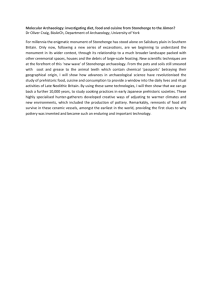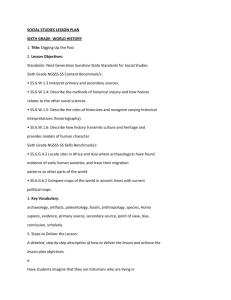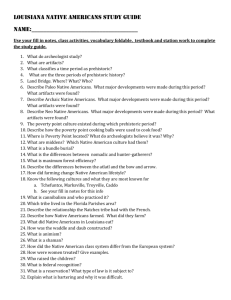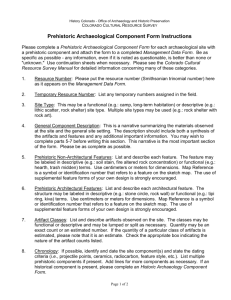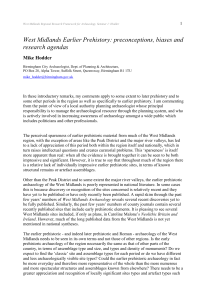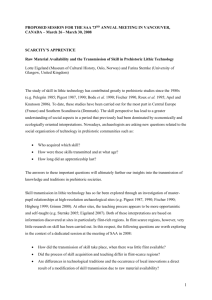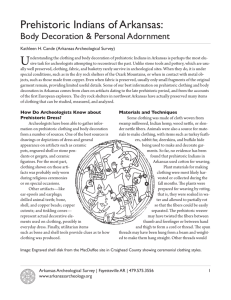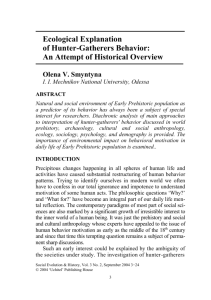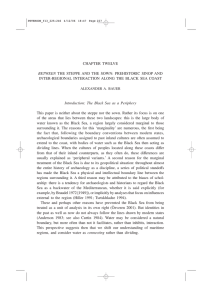Archaeology – the systematic study of past human life and culture
advertisement
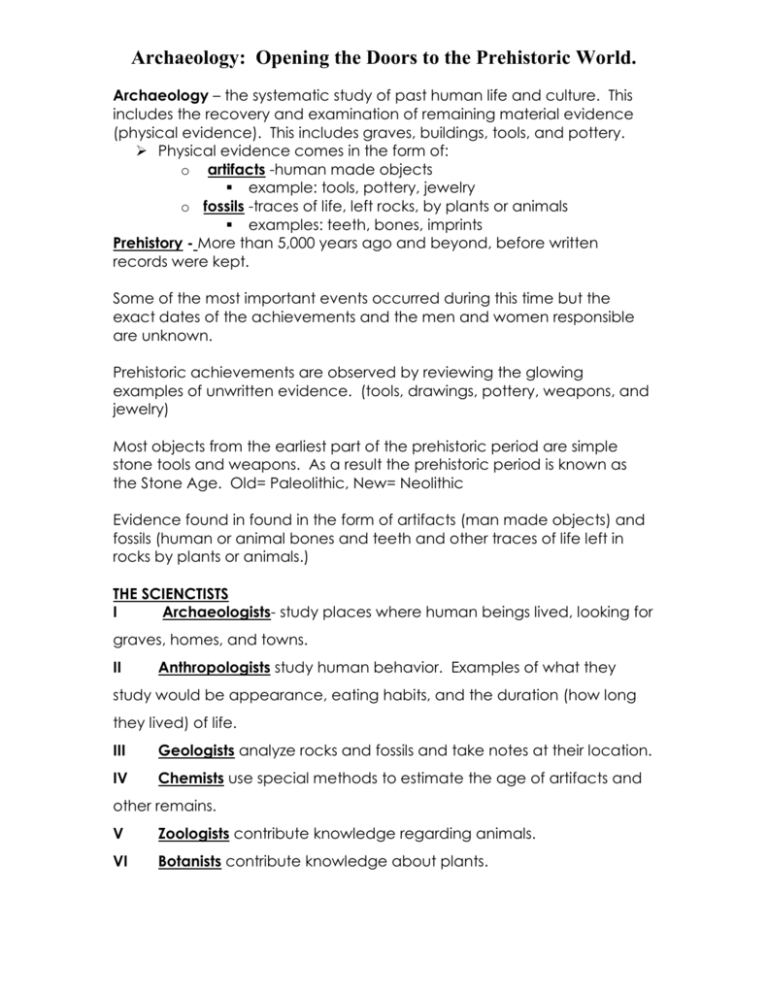
Archaeology: Opening the Doors to the Prehistoric World. Archaeology – the systematic study of past human life and culture. This includes the recovery and examination of remaining material evidence (physical evidence). This includes graves, buildings, tools, and pottery. Physical evidence comes in the form of: o artifacts -human made objects example: tools, pottery, jewelry o fossils -traces of life, left rocks, by plants or animals examples: teeth, bones, imprints Prehistory - More than 5,000 years ago and beyond, before written records were kept. Some of the most important events occurred during this time but the exact dates of the achievements and the men and women responsible are unknown. Prehistoric achievements are observed by reviewing the glowing examples of unwritten evidence. (tools, drawings, pottery, weapons, and jewelry) Most objects from the earliest part of the prehistoric period are simple stone tools and weapons. As a result the prehistoric period is known as the Stone Age. Old= Paleolithic, New= Neolithic Evidence found in found in the form of artifacts (man made objects) and fossils (human or animal bones and teeth and other traces of life left in rocks by plants or animals.) THE SCIENCTISTS I Archaeologists- study places where human beings lived, looking for graves, homes, and towns. II Anthropologists study human behavior. Examples of what they study would be appearance, eating habits, and the duration (how long they lived) of life. III Geologists analyze rocks and fossils and take notes at their location. IV Chemists use special methods to estimate the age of artifacts and other remains. V Zoologists contribute knowledge regarding animals. VI Botanists contribute knowledge about plants. Archaeology: Opening the Doors to the Prehistoric World. The Archaeological Process1) A map of the site is made 2) The map is marked up into a grid with squares so workers can identify exact spot an object was found 3) Soil is carefully removed layer by layer 4) Loosened soil id sifted through a small screen to preserve tiny objects 5) Artifacts are then labeled, cleaned and photographed 6) Drawings are made to show what an object may have looked like unbroken 7) Sample of clay, paint, and soil are sent to labs for analysis
